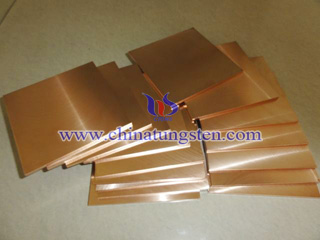Tungsten Copper Power Properties Test (2/2)
- Details
- Category: Tungsten Information
- Published on Monday, 07 March 2016 17:23
- Written by xiaobin
- Hits: 253
Next, we introduce transmission electron microscope (TEM), which is a kind of high-powered high-resolution microscope. Compared with common optical microscope, it uses electromagnetic field as lens and was widely used in super-fine grain, aggregates and some nano-scale material testing. Furthermore, since the electron beam penetration is weak, so the specimens for electron microscopy of ultrathin sections shall be made about a thickness of about 50nm, which require ultra-microtome machining. For tungsten-copper powder, the thickness is more than 100nm, if the sample is required and the powder milled sample was dissolved in ethanol, in an ultrasonic cleaning after the suspension of the dispersed drops in the electron microscope with a copper medium carbon film, powder morphology was observed after drying.
Finally, thermal analysis, which refers to a change in endothermic or exothermic reactions that take place through the heating and cooling process and the quality of the material, the components was analyzed and identified substance. It includes that differential scanning calorimetry (DSC), which measuring thermal transitions within the material and relevant to the relationship between temperature and heat flow. The shape of the melting peak on DSC curve reflects the particle size distribution; the information can be drawn melting enthalpy crystallinity. Themogravimentric analysis (TGA) records that temperature changes and the time the sample quality, measurable by TGA analysis of injection molding material at different temperatures of weight loss situation, and in order to determine the heating rate of heat degreasing.

| Tungsten Copper Supplier: Chinatungsten Online tungsten-copper.com | Tel.: 86 592 5129696; Fax: 86 592 5129797;Email:sales@chinatungsten.com |
| Tungsten News & Prices, 3G Version: http://3g.chinatungsten.com | Molybdenum News & Molybdenum Price: http://news.molybdenum.com.cn |





 sales@chinatungsten.com
sales@chinatungsten.com